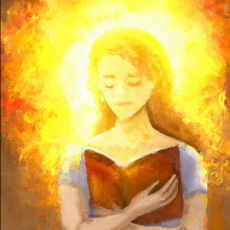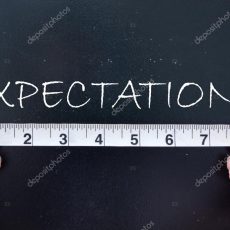Jean-Paul Sartre was a French philosopher,writer and political activist, and one of the central figures in 20th Century French philosophy. He is best known as the main figurehead of the Existentialist movement.
In his writing, ‘The Work of Art’, Sartre first establishes clearly that he does not wish to deal with the problem of the work of art in its entirety. Rather he concerns himself essentially with the existential type of the work of art. Sartre strongly believes in the law that “the work of art is an unreality”.
He explains this law by first citing the example of a painting of Charles VIII where this particular Charles VIII is an aesthetic object which is different from the frame, the canvas which are the real objects of the painting. As long as we concentrate solely on the frame and canvas, the aesthetic object will not present itself to our realising consciousness. It shall present itself only when the consciousness undergoes a radical change and becomes imaginative giving rise to the imaginative consciousness. And since Charles VIII who is unreal as long as he is painted on this canvas, is precisely towards which our aesthetic appreciation is directed, we are led to believe that in a painting, the aesthetic object is unreal. Happy Ho organizes best Meditation and Tarot classes in Noida and Delhi NCR area in India.
The unrealness of the aesthetic object is of great importance once we are making a distinction between real and imaginary work of art. It is commonly assumed that a painter has an idea in the form of a mental image (which is incommunicable) which he/she then realises on canvas for others to observe. This makes us believe that there is a transition from the imaginary to the real. However,this is false. What is real are the strokes of the brush, the coarseness of the canvas, the frame put around the painting. But all of these do not make up the object of aesthetic appreciation. The point is that the painter has not realised the mental image but only created a material analogue by looking at which anyone will be able to grasp the painter’s mental image. But the image rendered by the material analogue continues to be unreal.
What deceives us here is the real and sensuous pleasure which some real colours on the canvas give us. But what one must understand that these colours are grasped as a part of an unreal whole (the aesthetic object). It is therefore in the unreal that the relationship of colours and forms take on their real meaning.
Sartre brings the point back home by saying that the painting is an analogue. Its unreal aesthetic object manifests itself through the means of a real canvas. The aesthetic enjoyment is real but it is not grasped from something real; rather it results from the unreal ‘beautiful’ aesthetic object which itself is constituted and apprehended by an imaginative consciousness.
The philosopher then tries to apply the same characteristic of unrealness to fiction, poetry and drama. It is understood that the novelist.the poet and dramatist use words to construct unreal analogues; it is also evident that the actor who plays Hamlet uses himself, his entire body as an analogue of an imaginary person. Some actors are said not to believe in the character they are portraying on the stage whereas others start identifying themselves with theirs. In both the cases, the actor does not believe himself to be Hamlet. But he uses all his power (feelings,gestures,strength) to make Hamlet real. But by this very fact he takes the reality away from them. Therefore,Sartre says that it is not the character which becomes real in the actor. it is the actor who becomes unreal in his character.
Next Sartre takes on the examples of some arts whose objects seem to escape unreality by their very nature. For instance, a melody refers to nothing but itself. He takes the example of an orchestra playing Beethoven’s Seventh Symphony. As an audience, he has objection to hearing an amateur orchestra and would prefer a well known musical company; a poor orchestra would seem to betray the work it is playing. But now what is the Seventh Symphony itself? Is this synthetic whole real or unreal? Let’s first pay attention to the fact that he is listening to the Seventh Symphony which does not exist in time. One does not grasp it as a particular event in history for it will be played again and again. Let’s now see how one hears the symphony. Some might shut their eyes and block the visuals only to listen to purely the sounds. Others watch the orchestra or the back of the conductor .But they do not see what they are looking at (the Seventh Symphony). This is what is meant by reflection with auxiliary fascination.
Aesthetic contemplation, Sartre believes, is an induced dream and passing into the real is the actual waking up .From these few observations, Sartre concludes that the real is never beautiful. That is why he considers it to be stupid to confuse the moral with the aesthetic. To take an aesthetic attitude towards life would be absurd. For the preservation of the work of art and aesthetic experience the world of reality and the world of imaginary should not be confused. This confusion would result in a disorder like a case of paramnesia in which the real objects function as analogons for the imaginary objects. In this absurd situation the real world would be expected to be as imaginary world.





